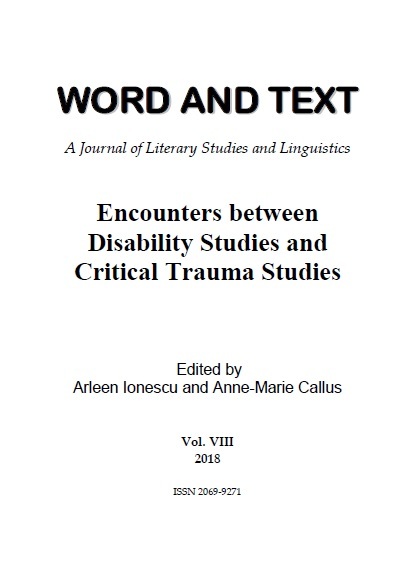Reclamation of the Disabled Body: A Textual Analysis of Browning’s Freaks (1932) vs Modern Media’s Sideshow Generation
Reclamation of the Disabled Body: A Textual Analysis of Browning’s Freaks (1932) vs Modern Media’s Sideshow Generation
A Textual Analysis of Browning’s Freaks (1932) vs Modern Media’s Sideshow Generation
Author(s): Sasha Dilan KrugmanSubject(s): Social Sciences, Theatre, Dance, Performing Arts, Language and Literature Studies, Gender Studies, Literary Texts, Essay|Book Review |Scientific Life, Studies of Literature, Cultural Anthropology / Ethnology, Culture and social structure , Individual Psychology, Social psychology and group interaction, Personality Psychology, Psychology of Self, Psychoanalysis, Social differentiation, Studies in violence and power, Health and medicine and law, Victimology, Film / Cinema / Cinematography, Social Norms / Social Control, Identity of Collectives
Published by: Universitatea Petrol-Gaze din Ploieşti
Keywords: trauma; disability; carnival; circus; freakshow; abjection; American Gothic; film; media; television;
Summary/Abstract: This article introduces Tod Browning’s 1932 film Freaks, in conversation with nineteenth century carnival and fair practices and further explains the creation and development of the freakshow. In tandem with theoretical work by authors such as Judith Butler, Rosemarie Garland-Thomson, Adrianna Cavarero and Lennard Davis, the article positions the freakshow within disability and trauma through the notions of ‘staring’, ‘normal’ and ‘horrorism’. Using two contemporary texts such as American Horror Story: Freakshow and the reality television series Freakshow, this article firstly introduces these texts thematically before analysing all three in conversation with one another as a means of further contextualizing the role of the freakshow in contemporary cultural products, then connecting these texts to the notion of violence and the use of disability as a tool for horror. The article concludes that although the freakshow has been dismantled in the literal sense, the obvious bodily difference that predicates it still remains present in today’s cultural sphere.
Journal: Word and Text, A Journal of Literary Studies and Linguistics
- Issue Year: VIII/2018
- Issue No: 01
- Page Range: 95-110
- Page Count: 16
- Language: English

